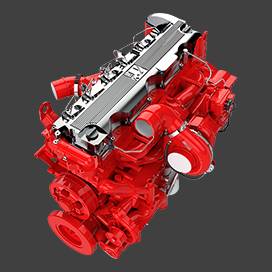Nov . 08, 2024 19:27 Back to list
what is a floating brake drum
Understanding Floating Brake Drums
In the world of automotive engineering, the brake system plays a crucial role in ensuring vehicle safety and performance. Among the various components that make up a braking system, the brake drum is a fundamental part, especially in older vehicle designs and certain applications. One particular variant of the brake drum is the floating brake drum, which provides specific advantages over traditional fixed designs. This article will delve into what a floating brake drum is, how it operates, and its benefits within braking systems.
What is a Floating Brake Drum?
A floating brake drum is a type of drum brake assembly where the drum is not rigidly mounted but allowed to float or move slightly on its mount. This setup contrasts with fixed drum designs, in which the drum is securely attached to the wheel hub. The floating design allows for a degree of movement in response to misalignments or variances in the braking force exerted by the brake shoes.
In most floating brake drum systems, the drum is mounted on a set of pins or bushings, enabling it to shift position slightly during braking. This movement helps in maintaining even contact between the brake shoes and the drum surface, ensuring optimal braking performance and reducing the risk of premature wear.
How Does it Work?
The operation of a floating brake drum involves several key components including the brake drum, brake shoes, and the backing plate. When the driver engages the brake pedal, hydraulic pressure is transmitted through the brake lines to the brake assembly. This pressure pushes the brake shoes outward against the inner surface of the brake drum.
In a floating brake drum, as the brake shoes expand, they may apply uneven pressure to the drum due to the inherent movements of the wheels and vehicle dynamics. The floating design allows the drum to shift slightly, accommodating these variations and promoting consistent shoe contact across the entire drum surface. This dynamic adjustment not only aids in improving braking efficiency but also helps in reducing noise and vibration, which are common issues associated with traditional drum brakes.
Advantages of Floating Brake Drums
what is a floating brake drum

1. Enhanced Performance The ability of the drum to float ensures better alignment between the brake shoes and the drum surface, which can lead to more effective braking, especially under varying load conditions.
2. Reduced Wear Because the floating mechanism accommodates slight misalignments, it helps distribute wear more evenly across the brake shoes and the drum surface. This can extend the lifespan of these components, ultimately leading to reduced maintenance costs.
3. Improved Heat Dissipation Floating brake drums often feature better airflow than fixed drums, which can aid in heat dissipation during prolonged braking. Effective heat management is vital to prevent brake fade, enhancing the overall safety and reliability of the braking system.
4. Noise and Vibration Reduction The dynamic movement allowed by the floating design can help minimize noise and vibrations experienced during braking, contributing to a smoother, quieter ride for passengers.
Applications of Floating Brake Drums
Floating brake drums are commonly found in various applications, particularly in vehicles where braking performance is critical. They are often used in heavy-duty vehicles, trailers, and certain racing applications, where the advantages of this design can be fully realized. Furthermore, they are gaining popularity in certain modern vehicle designs as manufacturers continue to innovate and seek ways to improve safety and performance.
Conclusion
In summary, floating brake drums represent an important development in braking technology, offering enhanced performance, reduced wear, and improved reliability. While they may not be as commonly known as disc brakes, floating brake drums play a significant role in various applications, ensuring that vehicles can stop safely and efficiently in diverse conditions. Understanding this technology not only helps in better vehicle maintenance but also fosters an appreciation for the engineering innovations that keep our roads safer.
-
Scania Brake Drums: OEM Quality for Optimal Safety & Durability
NewsAug.16,2025
-
R.V.I: Advanced Remote Visual Inspection for Precision
NewsAug.15,2025
-
Discover HYUNDA: Innovative Vehicles, Equipment & Solutions
NewsAug.14,2025
-
R.V.I: Unlock Advanced Insights & Real-time Performance
NewsAug.13,2025
-
Kamaz Brake Drum: Durable & Reliable for Heavy Duty Trucks
NewsAug.12,2025
-
Heavy Duty Iveco Brake Drum - Premium Quality & Safety
NewsAug.11,2025
